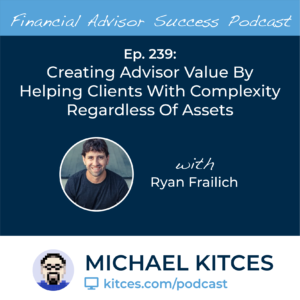If there is one constant in the world of investing and financial advice, it’s that there will always be a seemingly unending procession of “next great things”. Human progression being what it is, there have been some incredible opportunities for people to be rewarded for investing in innovation. However, for every “home run” like Amazon, Google, Microsoft, Ford, and McDonald's, there are just as many (or more) missteps, such as Enron, Long-Term Capital Management, Theranos, and Pets.com (to name just a few). The trick, of course, is knowing which is which, and (unfortunately) there’s just no real way to tell at the early stages. But that doesn’t stop the barrage of messaging that the public is exposed to across a plethora of media channels, telling them that they need to load up the proverbial boat in the next big game-changer and industry disruptor. And for financial advisors who (inevitably) start fielding client inquiries about such things, the question arises: what is the best way to respond when clients show interest in new (but still unproven) investment opportunities?
In our 65th episode of Kitces & Carl, Michael Kitces and client communication expert Carl Richards discuss the reasons advisors are so often skeptical of new investment opportunities, how they can communicate with clients as their views evolve, and how advisors who may have previously been too dismissive of a client’s interest in a new investment can rebuild any trust that may have been lost.
As a starting point, it’s important to acknowledge the fact that people of means are frequently targeted by less-than-forthcoming salespeople with investment opportunities and products that are often too good to be true. And in an effort to be expeditious with a client’s time, advisors frequently develop heuristics to quickly filter out investments that are too new, unproven, or just plain illegitimate. However, it’s also the case that some of those opportunities do turn out to be worthy of further investigation (as was the classic case with pioneering internet stocks in the ‘90s). Which means it’s not only challenging to screen out those too-early investments… but can also be a challenge to communicate to clients who expressed interest in a new investment that was too speculative or risky if/when things may have actually changed!
In such cases, it can be helpful to reiterate that part of an advisor’s job is to manage their investments according to their timeframes and risk tolerances and in a way that aligns with their long-term goals and core principles. From there, advisors can walk clients through the process of what it takes for something to be a qualified investment opportunity, and why the fundamental risk/reward calculus may have changed. And for advisors who feel they may have been too quickly (and emphatically) dismissive of an early stage opportunity, it’s important to apologize for being short and then follow up with an explanation of the firm’s criteria for investments, and why thoroughly researching every emerging opportunity that comes along is an inefficient (and expensive for the client!) use of time.
Ultimately, the key point is that there will always be a ceaseless parade of next great things, and regardless of whether or not they pan out, all new and innovative investment opportunities have some level of speculation and risk. And while there is a place for speculation and risk, it’s an advisor’s job to ensure that changes to a client’s investment portfolio align with their values and goals. Because, at the end of the day, clients who ask their advisors about a new opportunity are likely skeptical themselves, and are (deep down) looking to be either validated or cautioned. And when it comes to clients who lobby hard for every new thing that comes along, and push back on their advisors for taking a more measured approach… then the client may not end out being a good fit for the firm if always investing in the next new hot idea is really what they want?

 Welcome back to the 239th episode of the Financial Advisor Success Podcast!
Welcome back to the 239th episode of the Financial Advisor Success Podcast! Welcome back to the 238th episode of the Financial Advisor Success Podcast!
Welcome back to the 238th episode of the Financial Advisor Success Podcast!
